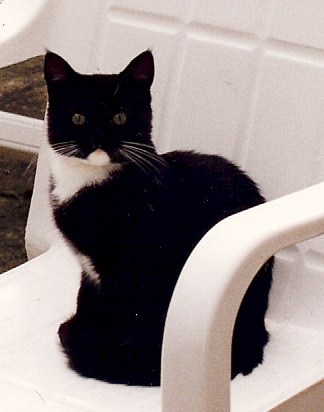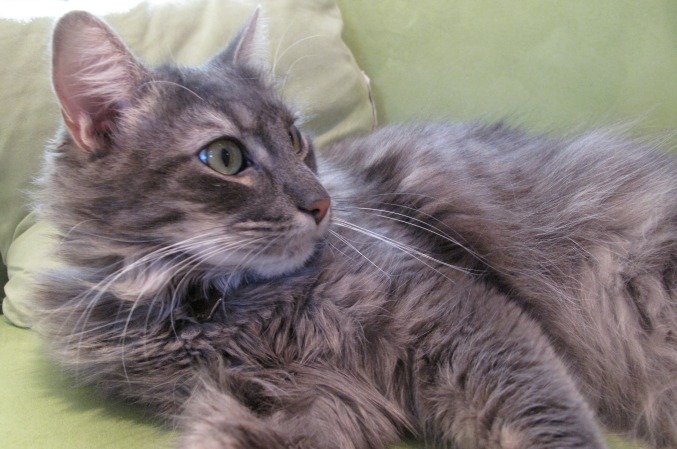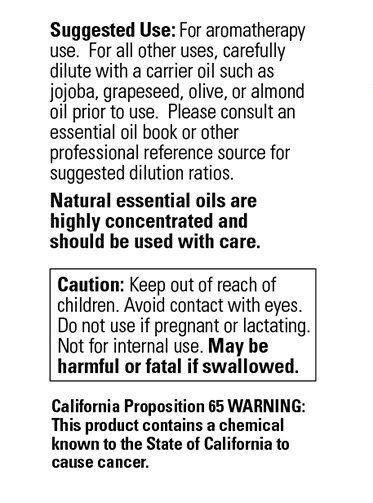by Robert Tisserand
This is an updated version of an article published here.
Some quite strong feelings and opinions have been expressed about essential oils and cats, and a frequently asked question is “Is it safe to diffuse essential oils around cats?”. Diffusing essential oils can be toxic to humans if it’s over-done, causing neurological symptoms such as headache or fatigue. In general, making long lists of specific oils that are allegedly “safe” or “toxic” to cats doesn’t make a lot of sense to me – it’s more about overall exposure. You can diffuse essential oils around cats safely, so long as there’s good ventilation, you only diffuse small amounts for limited periods of time, and your cat has the freedom to leave the room if it wants. A few parts per million of aromatic vapor in the air is not likely to be harmful, but be careful to avoid build-up of vapors over many hours.
Cats almost completely lack important liver enzymes that humans do possess, and which are important in the metabolism of many essential oil constituents. These are primarily UDP-glucuronosyltransferase (UGT) enzymes such as UGT1A6, UGT1A9 and UGT2B7 (Court 2013, Van Beusekom 2013). Therefore, there is a theoretical risk of increased toxicity to cats, though this is very much less of an issue with dogs. Menthol, for example, is primarily metabolized (in humans and rodents) through glucuronidation, and toxicity testing shows that menthol is 3-4 times more toxic to a cat than a rat (Opdyke 1976). We don’t know for sure that the greater toxicity to felines is because of the missing enzyme, but it’s very likely. But, while 3-4 times is a significant difference, it’s not a massive one. I certainly don’t advocate dousing your cat in large quantities of neat essential oils – ever. And cats are quite susceptible to toxicity from nutmeg oil and tea tree oil. But, a small amount of any essential oil, and a moderate amount of most, will not harm your cat.
In 1995 a Japanese film crew came to my house in Brighton England, to film me and my cat Myrtle. It was for a Japanese tv show about famous people and their cats, but the focus was clearly on Myrtle, not me. And, I guess you did not have to be an A-list celeb to be classed as “famous”… The shoot with Myrtle was difficult. She was not a very social creature even with her family and there were strangers in the house. At one point she hid under a bed, and my two (then little) girls decided to jump up and down on the bed, to “encourage” her to come out. The film crew’s focus went down to floor level in order to film Myrtle steadfastly staying where she was, with the mattress bouncing up and down on her head. This went on for some time.
Somehow Myrtle survived a further 13 years and when she passed away she was replaced by Ziggy. Ziggy is a Maine Coon, a breed of cat ideally suited to cold climates. Maine Coons have long hair,even between their toes, and long, bushy tails. So, not exactly perfect for Southern California weather, but when we got him as a kitten he didn’t look especially hairy! I have never used essential oils on Ziggy, because I have never had a reason to. I did use tea tree oil on Myrtle once, when she had an infected puncture wound. I squeezed out the pus, and dripped one drop of tea tree oil into the hole. I repeated this treatment over next two days, and she healed up fine after that.
However, an “overdose” of tea tree oil could be lethal to a cat. A total of 60 mL of undiluted tea tree oil was applied to the skin of three cats, as a treatment for severe flea bites (the cats had previously been shaved but there were no nicks) and to prevent further infestation. Later the same day, one cat was hypothermic, uncoordinated and unable to stand; one was comatose with severe hypothermia and dehydration, and one was trembling and unsteady. After intensive treatment two of the cats recovered and one died (Bischoff and Guale 1998).
The outcome is perhaps not surprising considering the very large amount of essential oil used, 20 mL on each cat. Given that a typical cat weighs 3-5 kg, this is equivalent to 4.0 – 6.6 mL/kg, although not all of it would be absorbed. The cat that died had elevated liver enzymes, suggesting hepatotoxicity. Several cases of toxicosis have been reported when tea tree oil was applied topically to dogs and cats. In most incidents the oil was used to treat skin conditions at inappropriate high doses. The typical signs observed were depression, weakness, incoordination and muscle tremors. Treatment of clinical signs and supportive care has been sufficient to achieve complete recovery within 2-3 days (Villar et al 1994). But perhaps the greatest aromatherapy-related threat to a cat’s health comes from pennyroyal oil. The following text used to appear on the Now Foods website – it has since been removed, which I think is a good thing, for safety reasons.
“Fun fact: Back in the days of yore, pennyroyal was also known as “pudding grass” for its use in a stuffing made of pennyroyal, honey, and pepper that was often used in hog’s pudding. Pennyroyal is a member of the mint family, and exudes a fresh, minty, herbaceous scent. While its scent is actually a bit more powerful than other mints, its therapeutic value is actually not as strong. Pennyroyal was used frequently by Ancients for a variety of ailments, and remains current in the British Herbal Pharmacopoeia, which recommends it for flatulence, intestinal colic, the common cold, delayed menstruation, and gout. However, its primary use in today’s world of aromatherapy is in pet care. Pennyroyal was a favorite of Pliny the Elder in the fight against fleas, and remains a favorite natural enemy of fleas to this day.”
Here’s another fact – using undiluted pennyroyal oil to treat your cat’s fleas could also kill your cat. We know that pennyroyal oil is toxic to the liver in both rodents and humans. We don’t know about toxicity to cats, but it can’t be any less toxic. Many websites do contain warnings about pennyroyal oil, and using dried, crushed pennyroyal leaves is perfectly safe. However, the fact that you can buy a 1 oz bottle of pennyroyal oil, and that neither it (see left), nor the above (related) website specifically tell you (a) not to use pennyroyal oil undiluted on your pet, nor (b) how much to dilute it for it to be safe, is worrying. (The reference to “aromatherapy” on the label is intriguing – what constitutes “aromatherapy use”? I certainly can’t think of a scenario in which undiluted pennyroyal oil would be safe.)
The rat oral LD50 value for pennyroyal oil is 400 mg/kg (Opdyke 1974) compared to 1,900 mg/kg for tea tree oil (Ford et al 1988) so pennyroyal is approximately 4.75 times more toxic than tea tree. Since 20 mL of dermally applied tea tree oil is lethal to a cat, then the probable equivalent lethal dose of pennyroyal would be 4.2 mL. I have little doubt that, in sufficient concentration, both essential oils will kill fleas, but there has been no published research on essential oils and cat fleas, dog fleas or human fleas. So we really don’t know what would be a toxic concentration to fleas, while being nontoxic to cats. My advice – tea tree oil is fine to use occasionally at up to 5% on cats, and pennyroyal may be safe at up to 1%, but is probably best avoided. Whether these concentrations would repel or kill fleas I have no idea, but I would suggest not using pennyroyal oil as a pet flea treatment. Sensibly used, most essential oils are safe to use in pet grooming products, or for low-level, intermittent diffusion.





I have never thought about the relation between home pet and essential oils – that you need to be careful and have some things in mind. Thank you for the article!
When Whiskers was 15 years old, years of wearing a commercial flea collar took its toll on his central nervous system and he was unable to have conventional flea treatments administered. I planted pennyroyal in the garden and when the fleas became active he would lie in it. He seemed to know it would help. I live in Queensland, Australia so our flea season is in extremely hot, humid weather.
Thank you very much for this article. I am about to take in an 8-10 year old cat, and I was sad about potentially having to get rid of my diffusers, which I use for relaxation and freshening up the rooms, after a friend told me I would absolutely have to stop diffusing oils. It’s good to know that everything in moderation is still okay, for humans and cats. (My parents have a Maine Coon–they are great cats.)